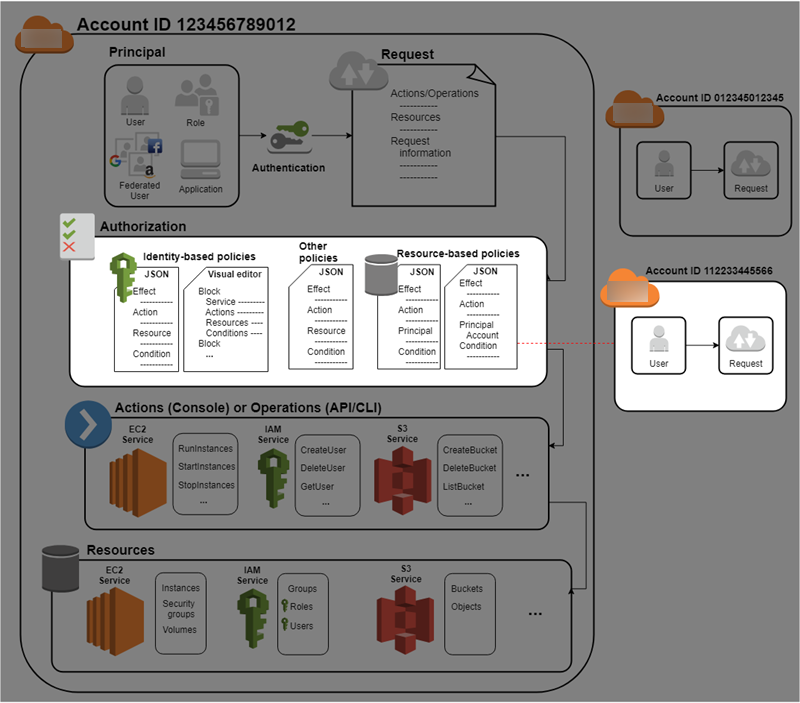Access management for Amazon resources
Amazon Identity and Access Management (IAM) is a web service that helps you securely control access to Amazon resources. When a principal makes a request in Amazon, the Amazon enforcement code checks whether the principal is authenticated (signed in) and authorized (has permissions). You manage access in Amazon by creating policies and attaching them to IAM identities or Amazon resources. Policies are JSON documents in Amazon that, when attached to an identity or resource, define their permissions. For more information about policy types and uses, see Policies and permissions in Amazon Identity and Access Management.
For details about the rest of the authentication and authorization process, see How IAM works.

During authorization, the Amazon enforcement code uses values from the request context to check for matching policies and determine whether to allow or deny the request.
Amazon checks each policy that applies to the context of the request. If a single policy denies the request, Amazon denies the entire request and stops evaluating policies. This is called an explicit deny. Because requests are denied by default, IAM authorizes your request only if every part of your request is allowed by the applicable policies. The evaluation logic for a request within a single account follows these rules:
-
By default, all requests are implicitly denied. (Alternatively, by default, the Amazon Web Services account root user has full access.)
-
An explicit allow in an identity-based or resource-based policy overrides this default.
-
If a permissions boundary, Amazon Organizations SCP, or session policy is present, it might override the allow with an implicit deny.
-
An explicit deny in any policy overrides any allows.
After your request has been authenticated and authorized, Amazon approves the request. If you need to make a request in a different account, a policy in the other account must allow you to access the resource. In addition, the IAM entity that you use to make the request must have an identity-based policy that allows the request.
Access management resources
For more information about permissions and about creating policies, see the following resources:
The following entries in the Amazon Security Blog cover common ways to write policies for access to Amazon S3 buckets and objects.